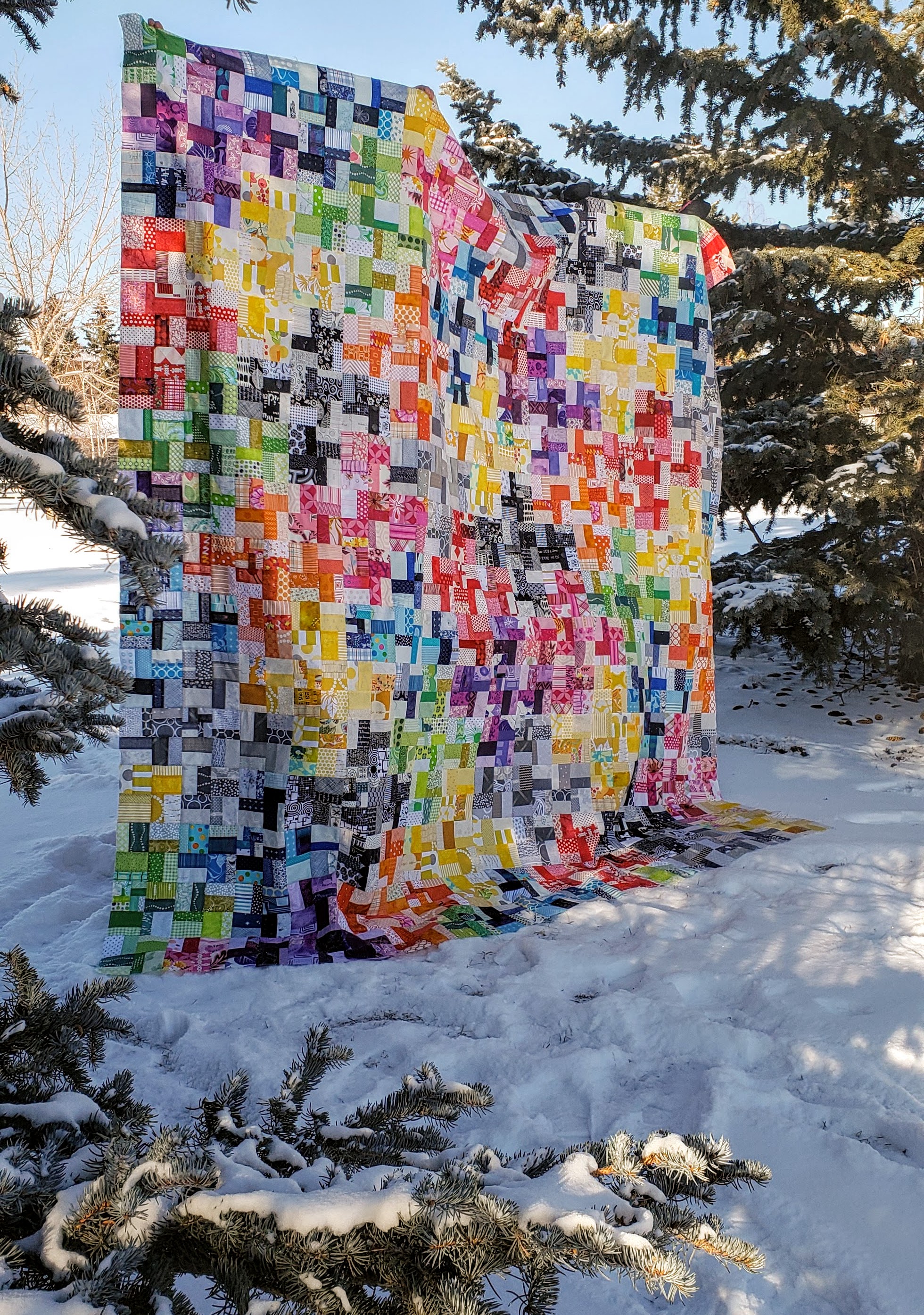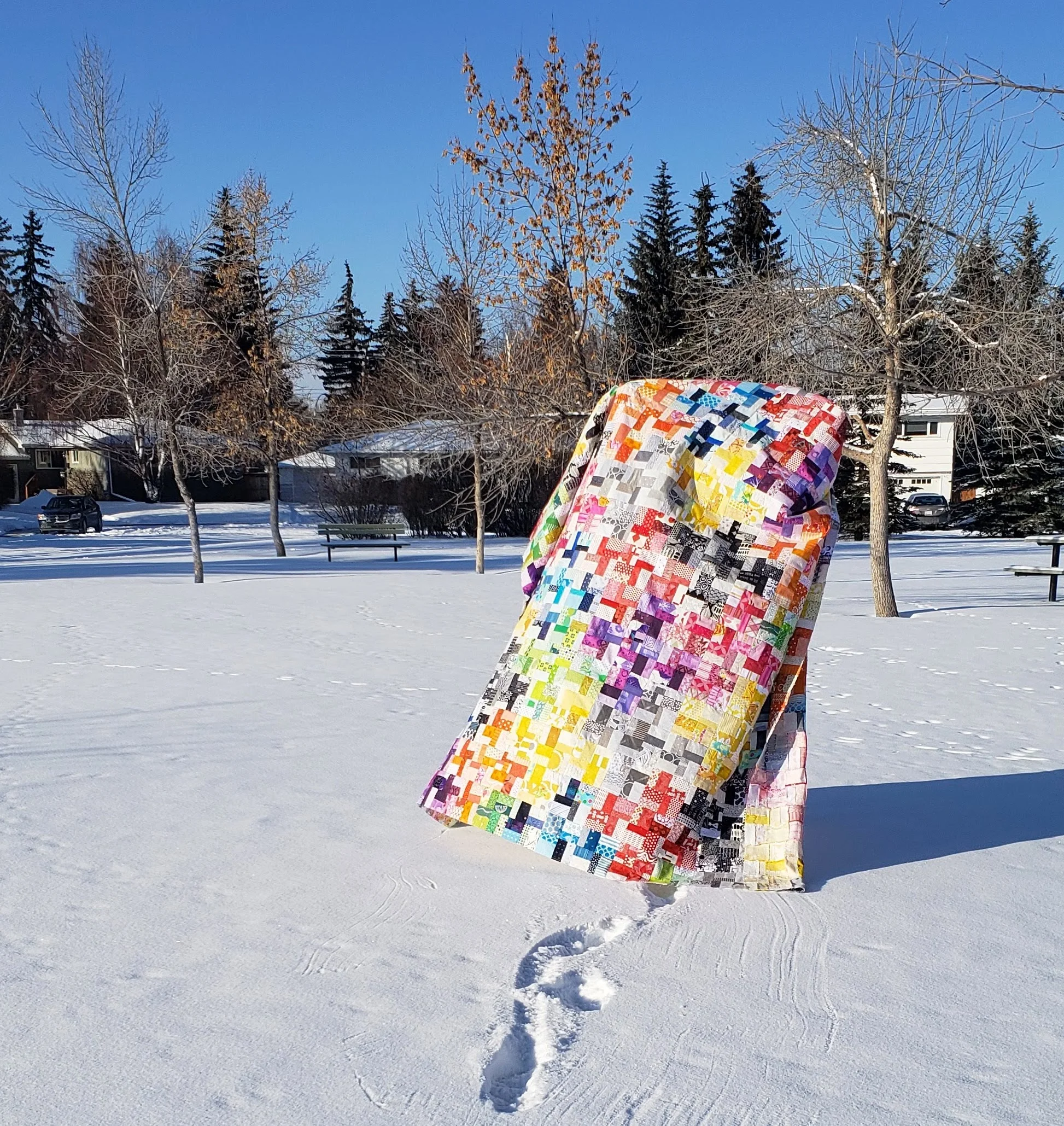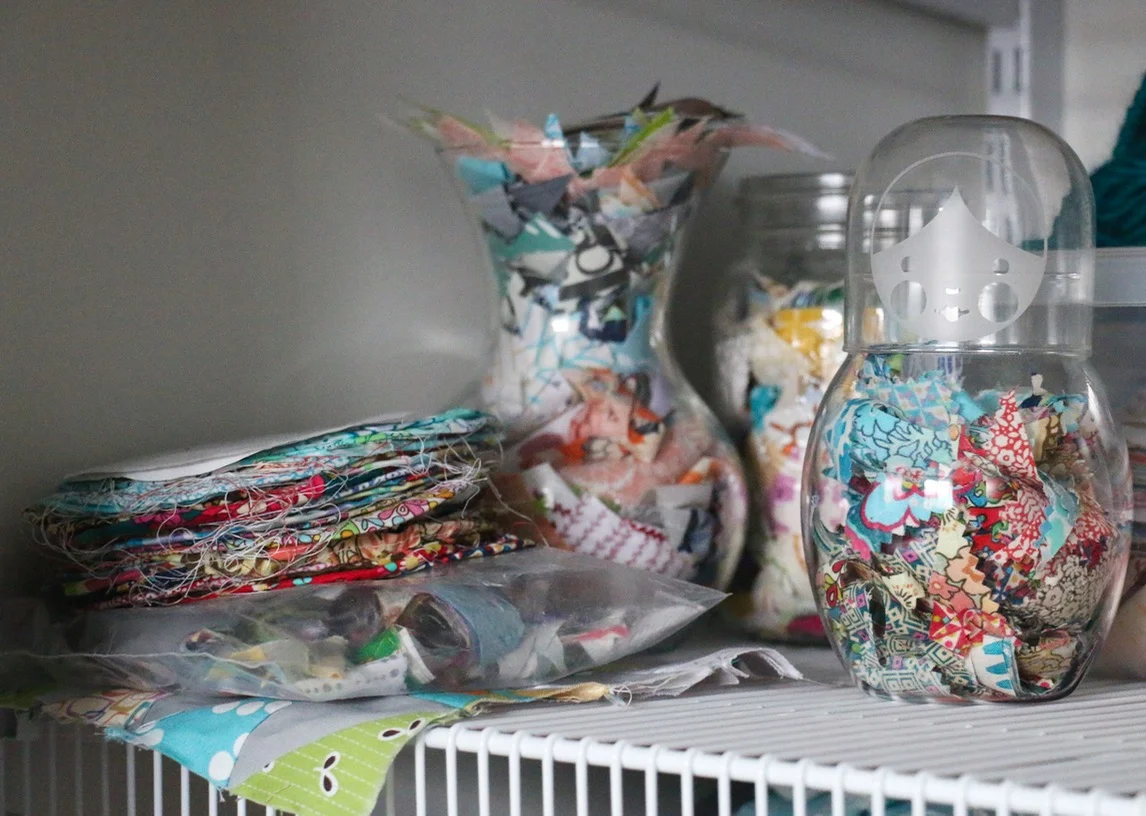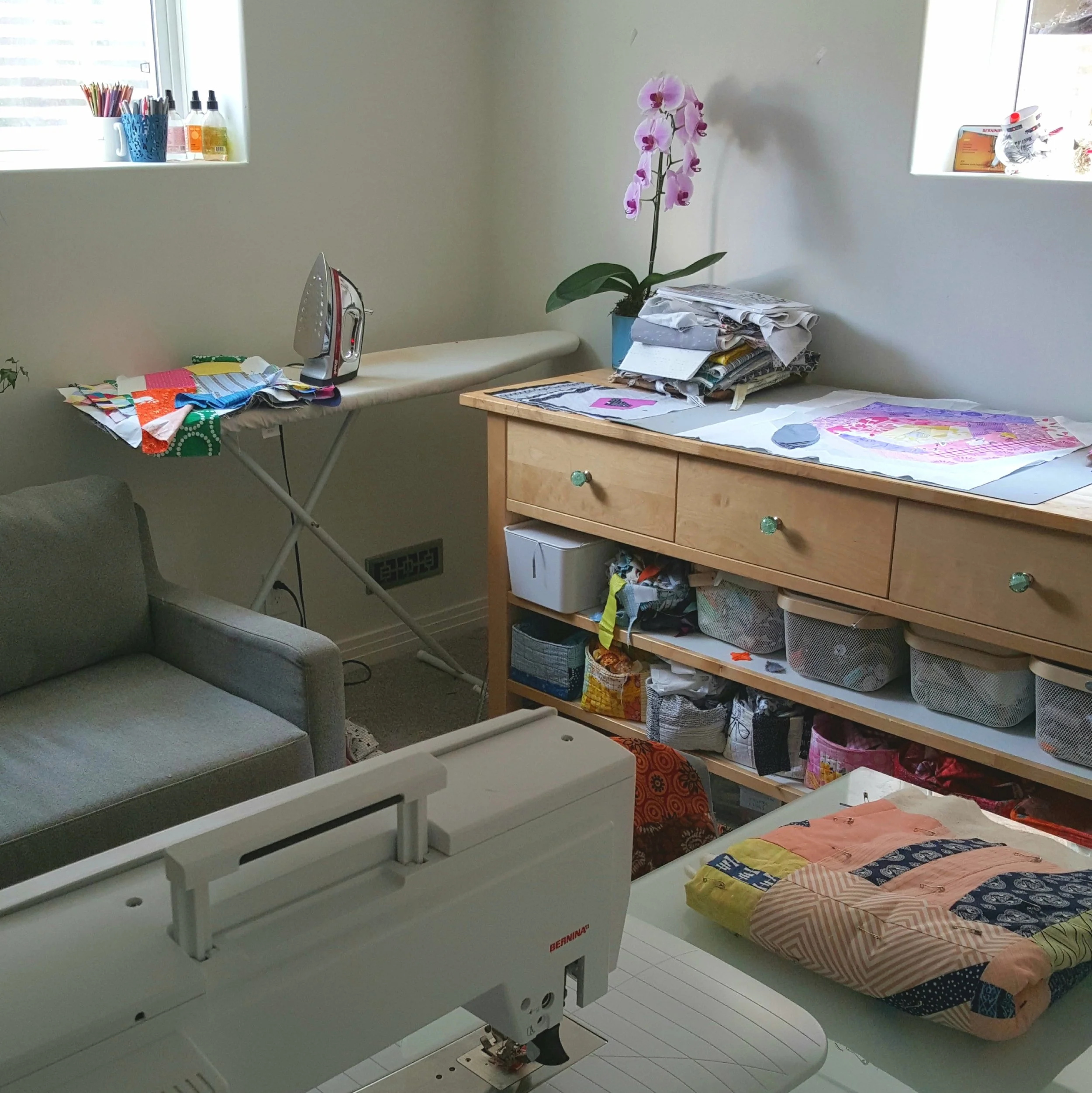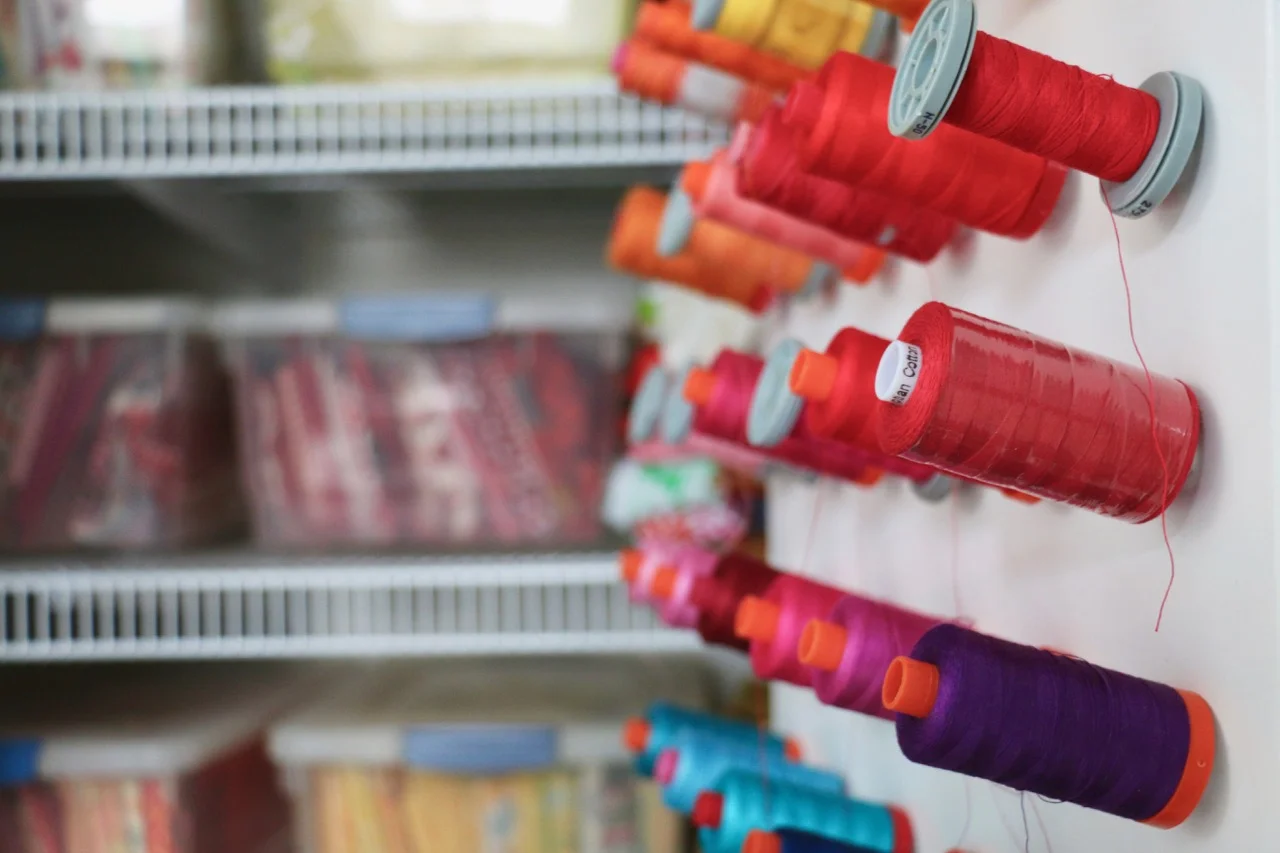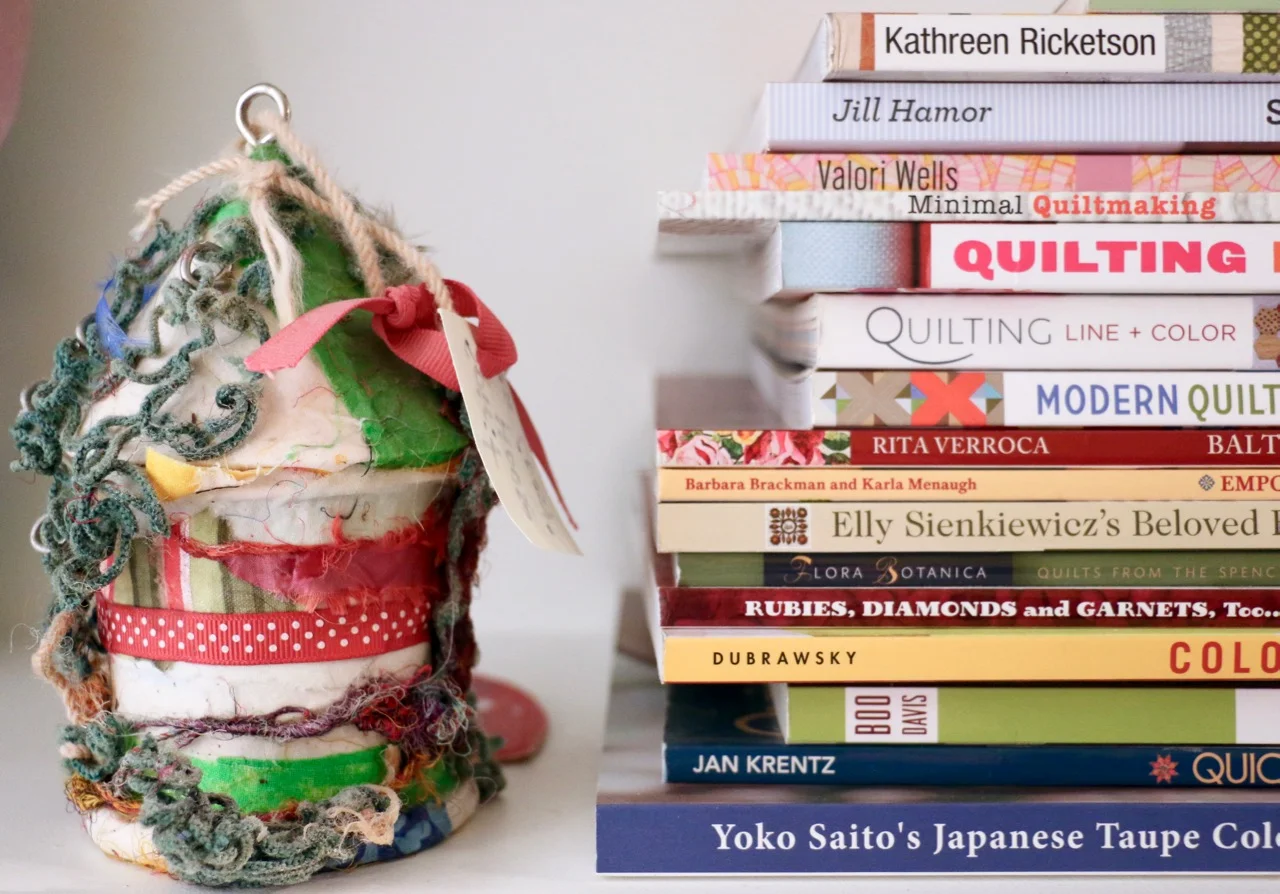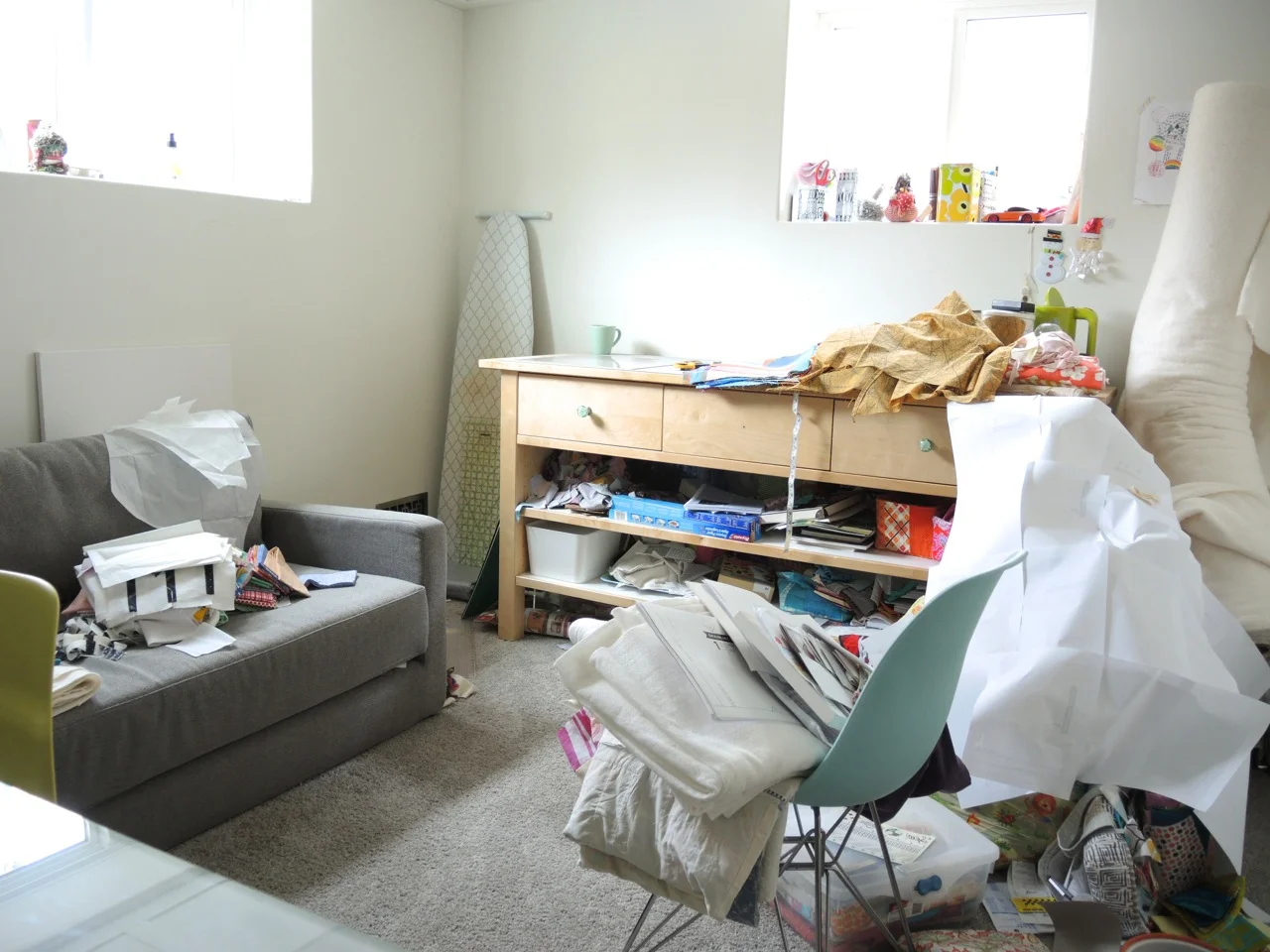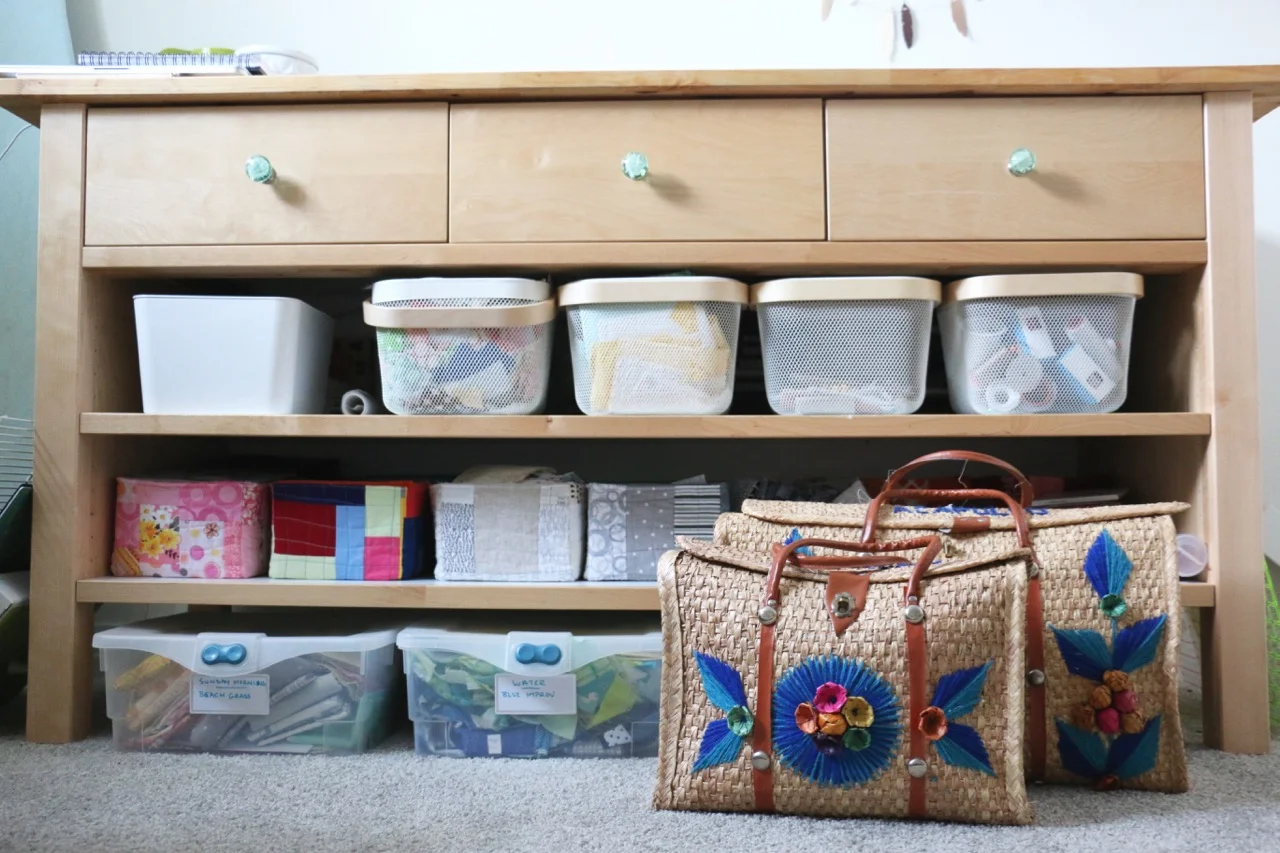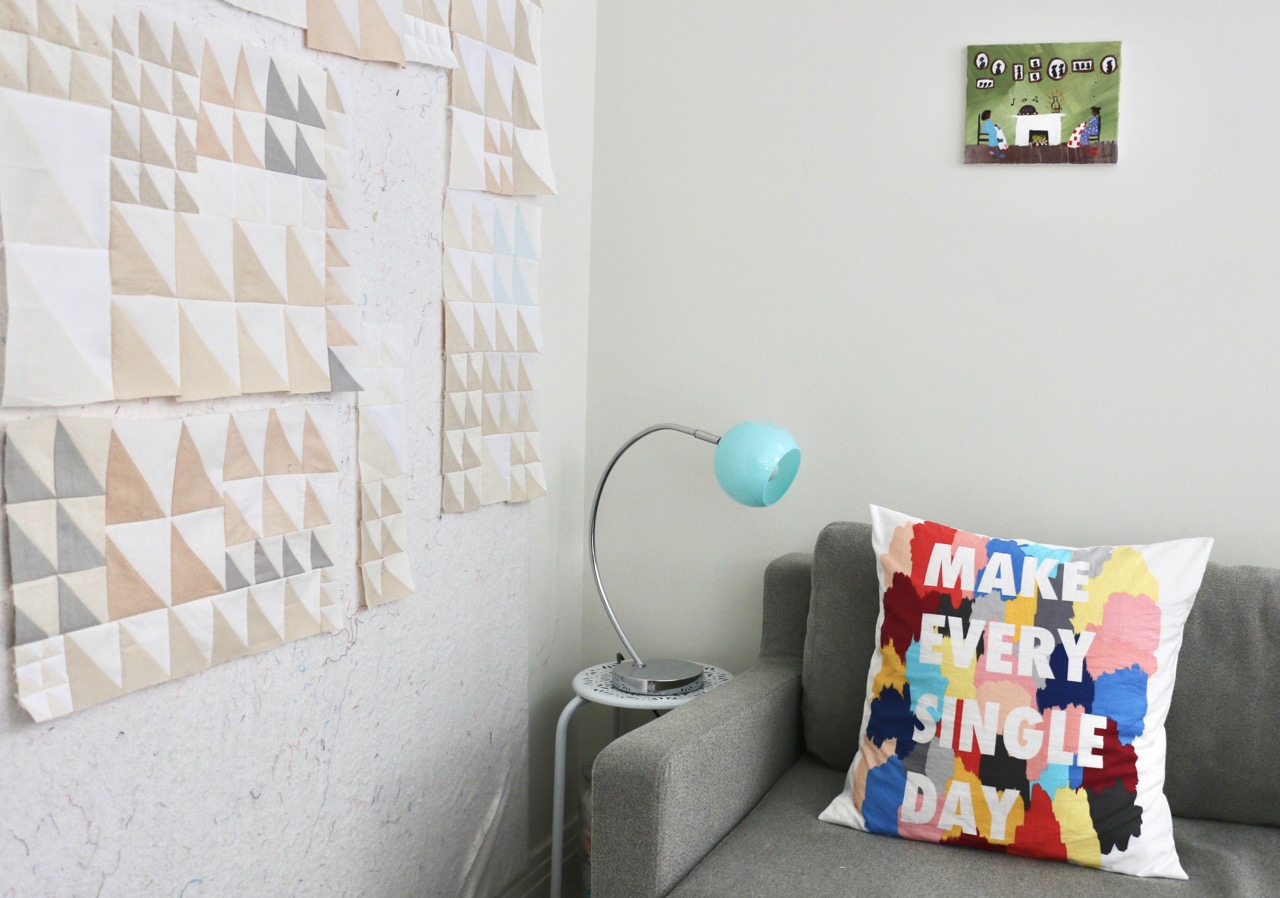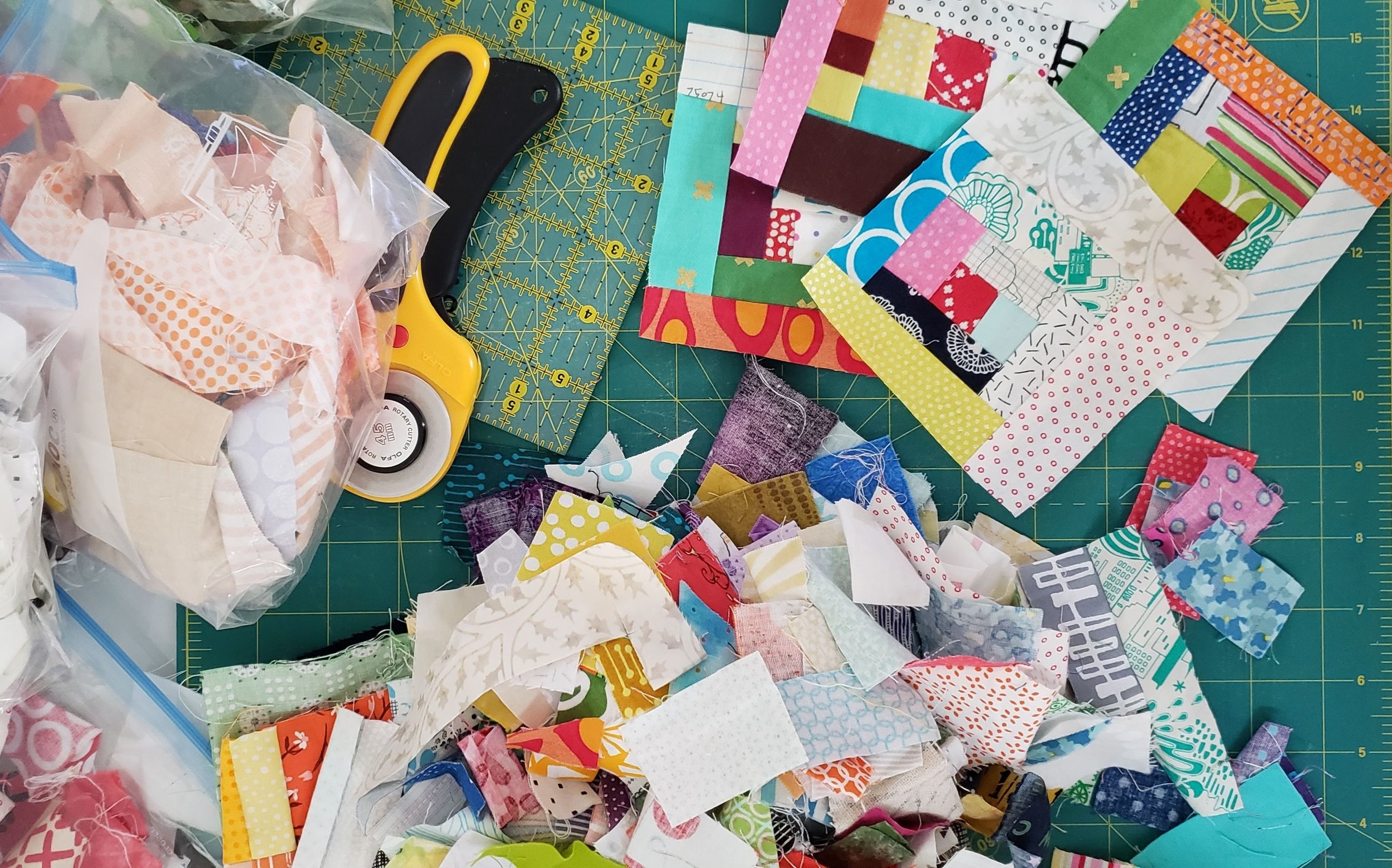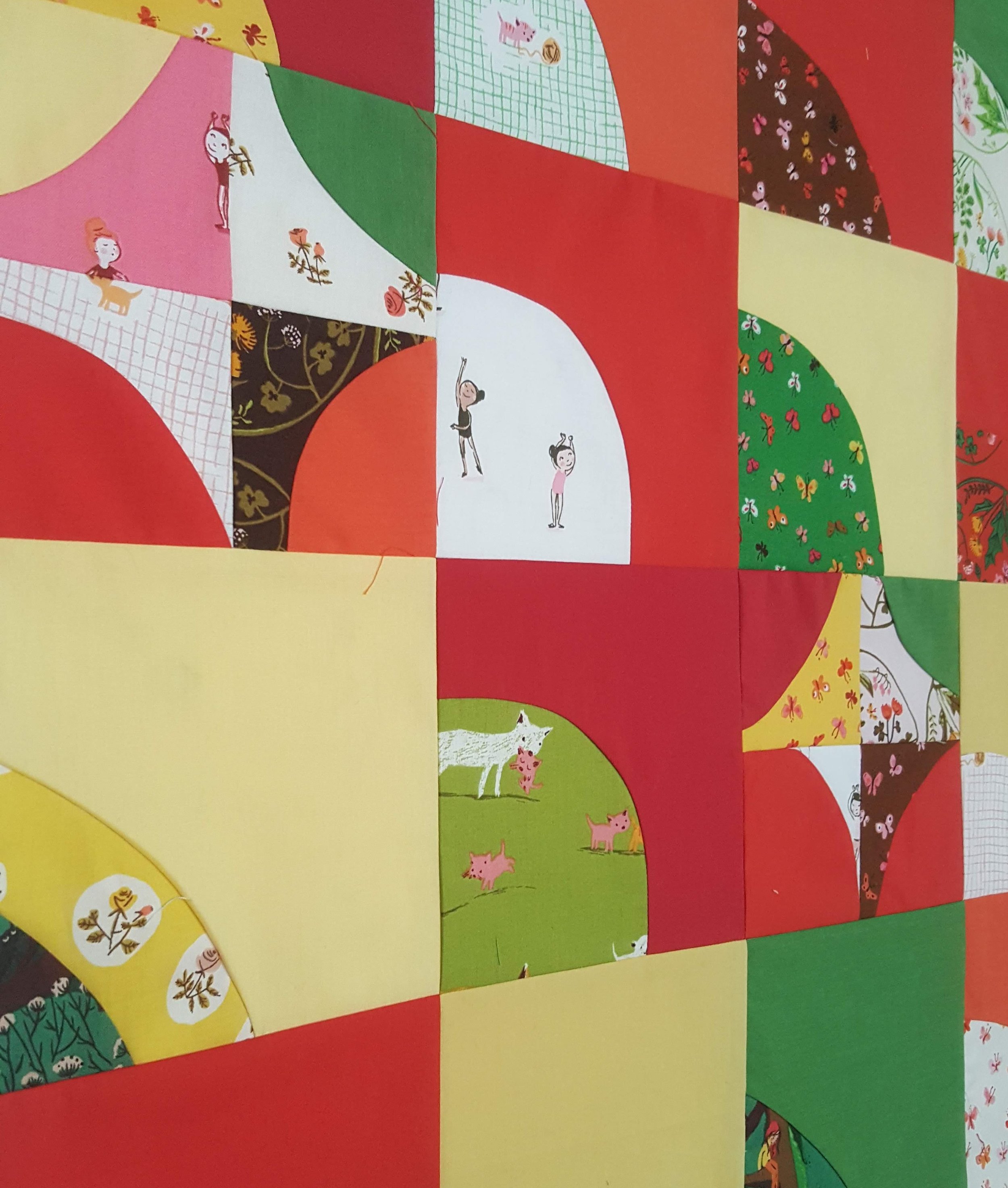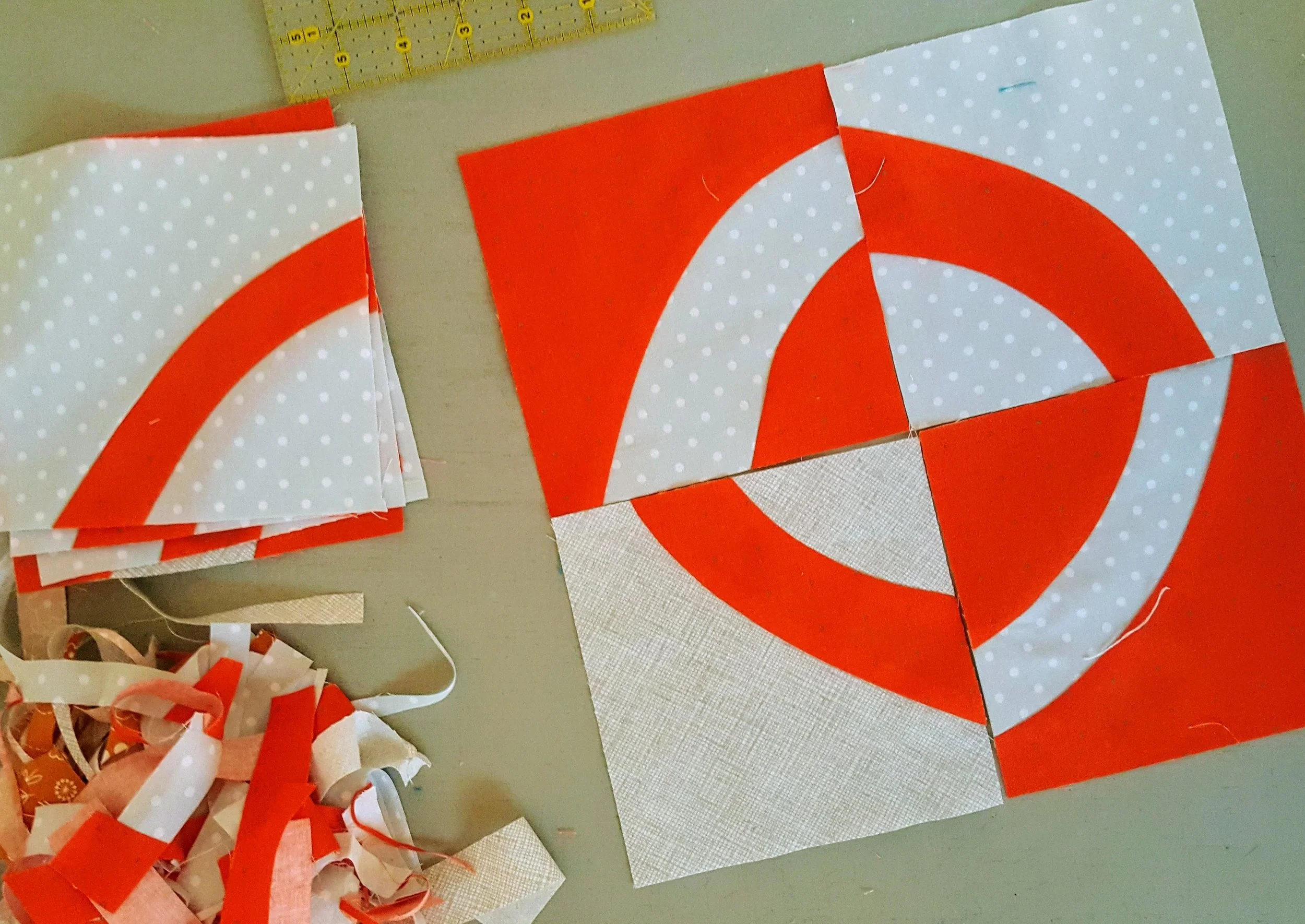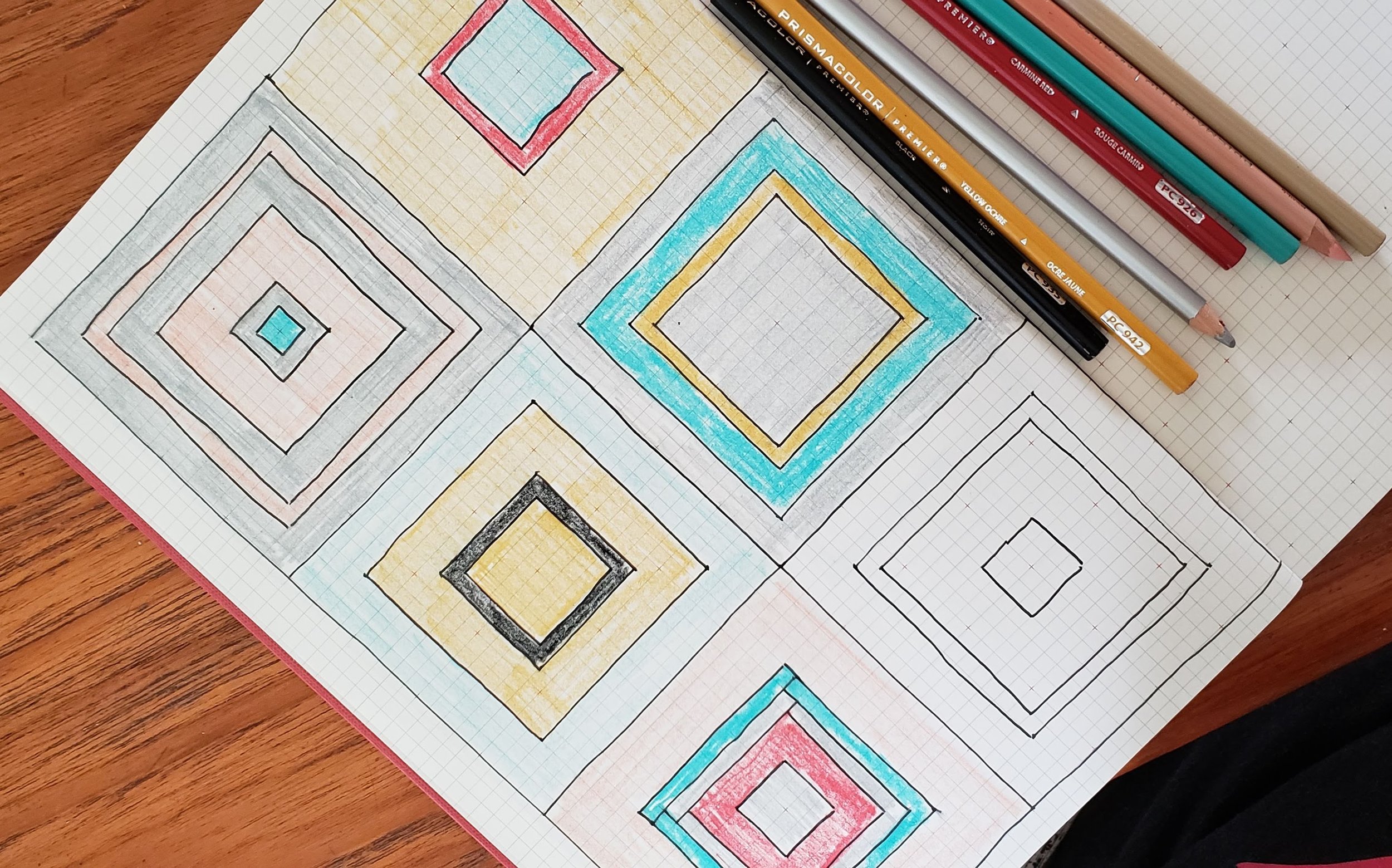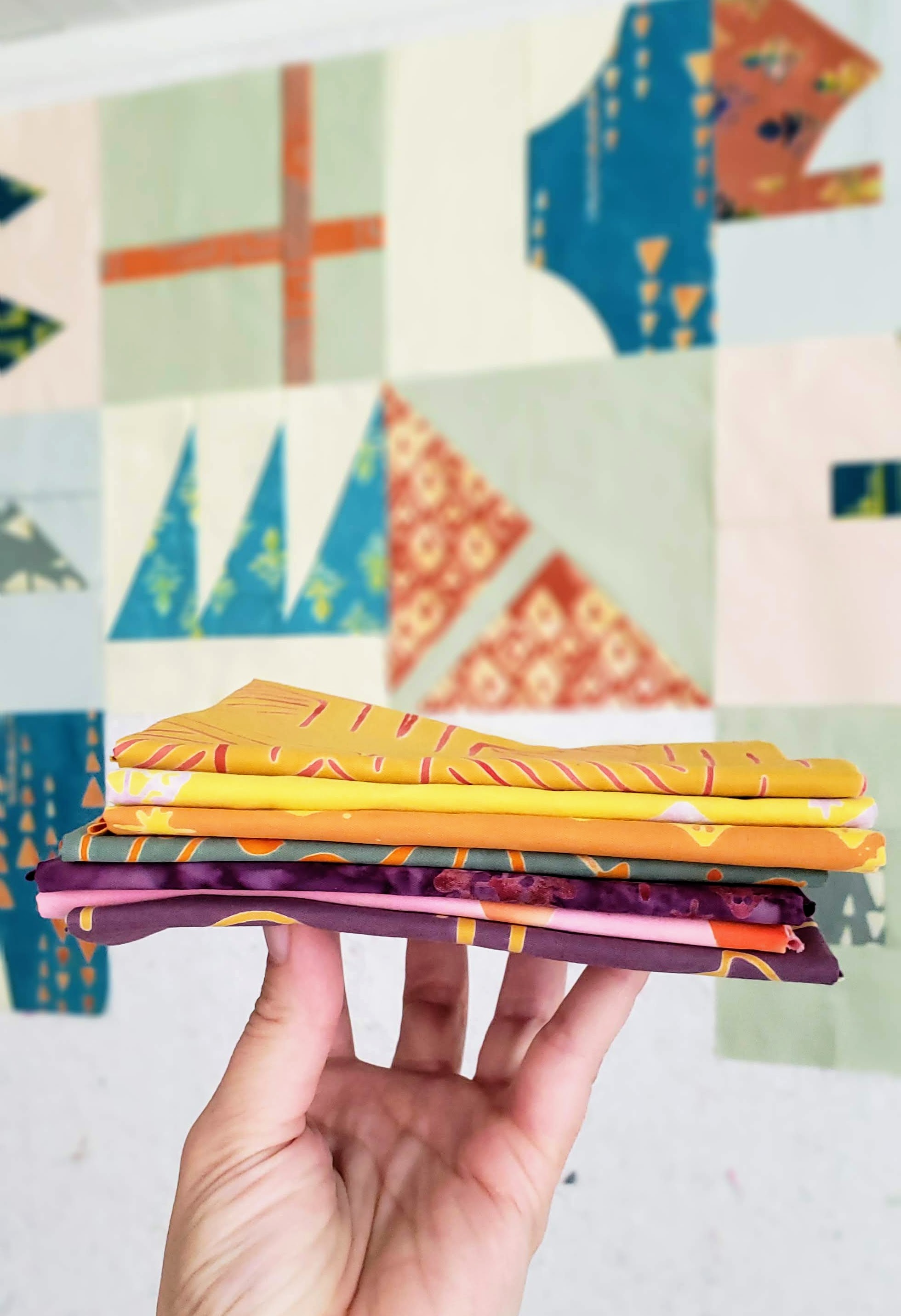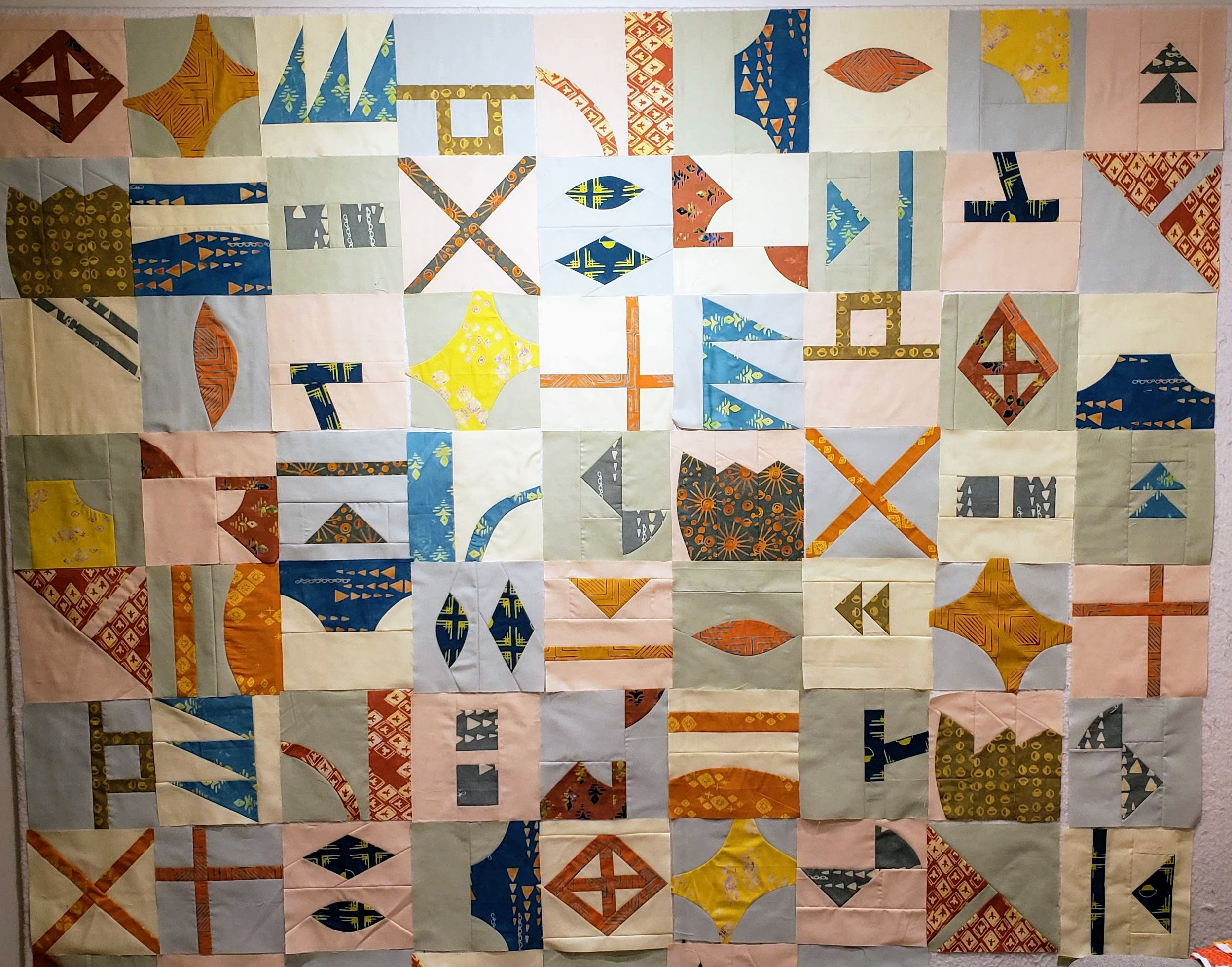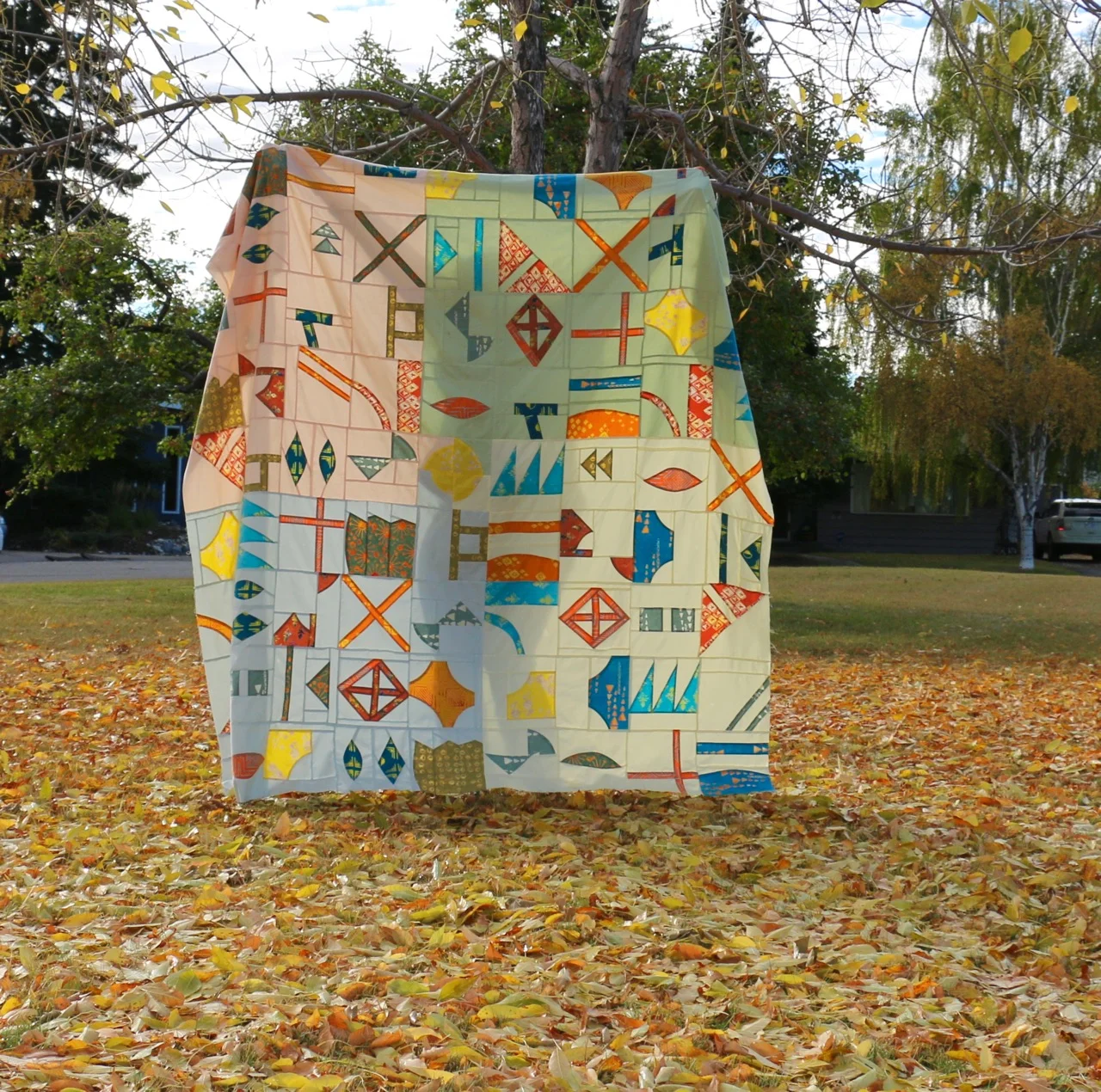The weekend I finished this quilt the weather turned and a proper winter settled in. That particular weekend I did not leave my house, preferring to stay in and sew. Hence the finished quilt. It hasn’t really warmed up much since then, so no photos. But today it is a balmy -17C so I made my kids help me take a few pictures.
Unfortunately, or fortunately, this ended up being a queen size quilt so even my freakishly tall 12 year old had a hard time keeping it out of the snow!
Every single fabric in here is a scrap. In November of last year I decided to listen to my own teaching advice. It really isn’t that big of a deal to sort scraps, once you just decide to do it. All of my strips, and those gathered along the way, had made their way into this big blue IKEA bag. Not the little ones, the big bags. It was just short of overflowing. So I sorted those strips by colour and then by value. Then I sewed.
I did a lot of sewing. Mind you, this is mindless sewing. So perfect for Morning Make and holiday stress and snippets of time to myself. The girls came in and helped periodically, especially once I got a new iron. Then I cut.
I did a lot of cutting. The sewing is sewing long strips together. Well, whatever length they may be. Then I have to cut them and square them up to 3.5’’ square. More sewing after that to make 4 patches of each colour.
The design work, interestingly, I did on the computer. My design wall is not big enough for this many blocks. And to colour on graph paper would be an exercise in patience because of making changes. Each changes means a new drawing. So I went as low tech tech as you can go. I used Excel. Super fancy, right? But it helped me sort out a basic plan, which I then refined on the design wall.
Part of the challenges of turning scraps into blocks into a quilt is that there is one giant limitation - you get what you get. My process is to design as I go. That means I did not plan it out and pre-determine how many blocks of each colour I needed. Rather, I used the scraps and, at some point, figured out how many blocks in total I would need. Then I worked on a layout for what I had. In the end, a few blocks were re-scrapped and I raided the colour sorted scrap bins for a few more pieces to make additional blocks.
This is how it ended up. It is colourful! It is bold! It is fun! It is -17C worthy for sure.


